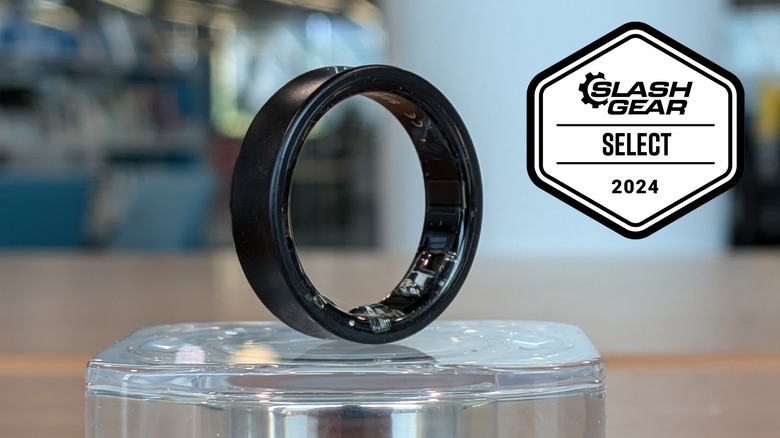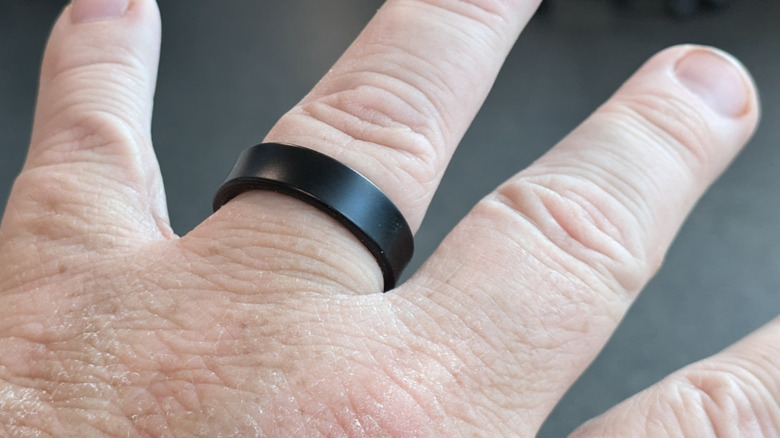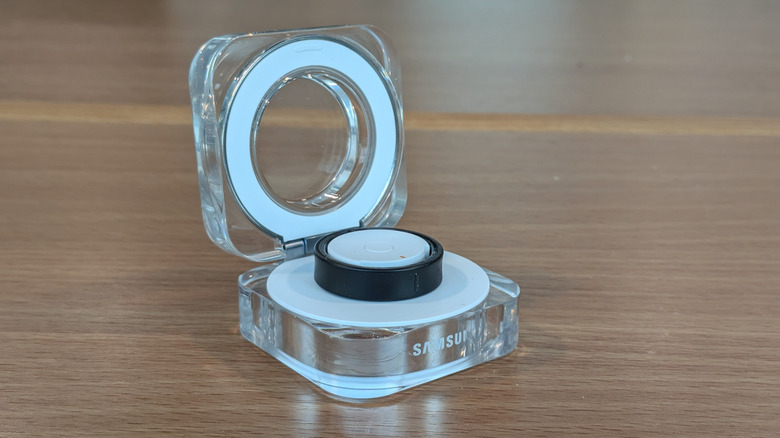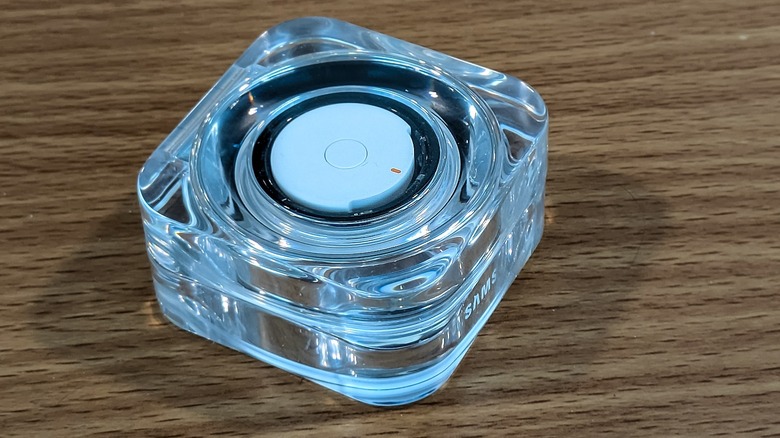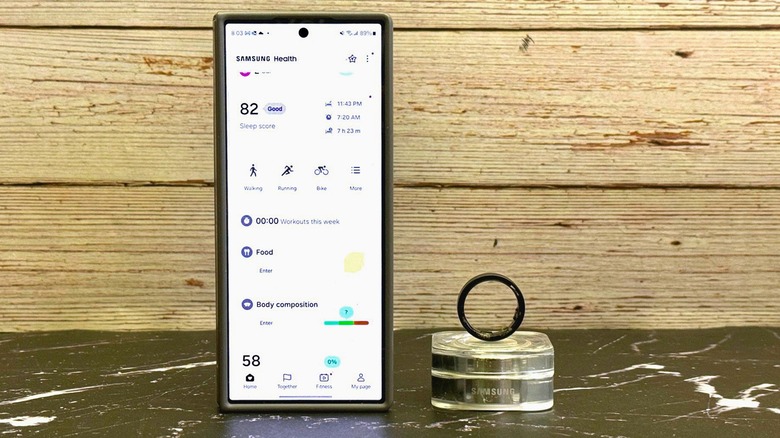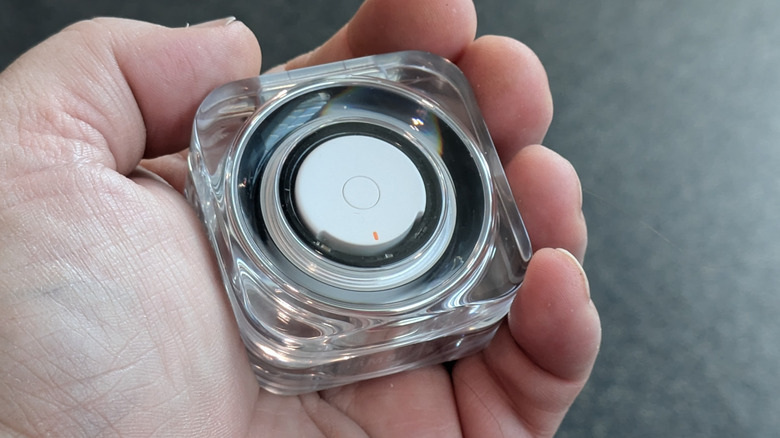Samsung Galaxy Ring Review: Fashionable, Refined, Pricey
- Thin, Light Hardware Design
- Long Battery Life
- Stylish Charging Case
- Accurate Biometrics Tracking
- Expensive
- Samsung Ecosystem Lock-in
We may receive a commission on purchases made from links.
Smart rings are having something of a moment in 2024. While not new to the industry, they're certainly attracting attention this year, with some ring makers even launching multiple devices in a single year. Samsung, after quite a bit of rumor and speculation is jumping in with both feet, making its presence felt with a very pricey entry into the space.
At $400, the Samsung Galaxy Ring is one of the most expensive smart rings on the market. It's also one of the most "locked in" devices in the Samsung ecosystem. Not only is the Samsung Galaxy Ring optimized to work with your Samsung phone, but it also works with the Samsung Galaxy Watch to enhance their capabilities.
Smart rings have a couple of key advantages over the devices they're seemingly designed to replace — smartwatches. First, they last a long time — the Samsung Galaxy Ring itself lasts for around a week on a charge. Second, they're more comfortable to wear for certain activities like sleeping. But are those advantages enough to justify the high price of the ring? That's what we're here to find out. I've been wearing a Samsung Galaxy Ring sample provided by Samsung for two weeks, and this is my full review.
Hardware Size and Fit
The Samsung Galaxy Ring is designed to be worn on your pointer or middle finger. My fingers could only wear the size 13 device (the biggest Samsung offers) on my ring finger, which is honestly where I'd prefer to wear the ring anyway. Samsung says you'll get more accurate readings on the other two fingers (middle or index finger). I'm not super into biology, so I'm not sure why those fingers are more accurate, but I haven't worn a ring on my index finger since my college days and that was...ahem...another time altogether.
The Ring is made of grade 5 titanium and is 7mm wide and 2.6mm thick. The ring has a nice, concave shape on the outside which gives it a nice, distinctive design. There's a mark on the bottom of the ring to show you how the ring should be oriented, which is a nice addition.
It weighs anywhere from 2.3 to 3 grams depending on size and as mentioned, can last for up to a week on a charge. That is certainly more than the 48 hours or so I clocked on the Samsung Galaxy Watch 7, and even the 60+ hours I got on the Samsung Galaxy Watch Ultra.
Battery Charging is Simple
The ring comes with a charging case which is super attractive. Almost as if Samsung took a page out of Nothing's playbook, the charging case for the ring is mostly clear. You set the ring on the charging stand in the center, and an LED ring shows you how much charge is left in the ring. If you just open the Ring case, the same LED strip shows you the charge left in the case.
The case will have about 1.5 to 2 charges in it, which means you could get through close to three weeks without ever plugging anything in, which is really nice. Like any other smart ring though, this is proprietary charging tech, so if you lose the case, you're out of luck. Of course, you'll have a week to find the charging case if it comes to that, so you won't have to hustle, but don't dawdle either.
Ecosystem Lock-in
If you use the Ring and a Samsung Galaxy Watch together, the watch can extend the battery life of the ring, which really doesn't make a ton of sense. I mean, it does, because the watch can detect heart rate and other health functions, but you would think the desirable outcome would be the other way around. You would think Samsung could disable some health functions on the watch to help it extend its two-day battery life, as opposed to extending the battery life of the ring, which already lasts a week. Ideally, I'd like to see a consumer choice built in — "Hey you have the Samsung Galaxy Watch and the Ring, so how would you like them to work together?" and have an option to extend the battery life of the watch, or the ring, or have both work at the same time.
As for the phone you pair it with, that also gets a little lock in as well. You can pair the ring with any Android smartphone, but when you pair it with a Samsung phone, you can use the ring to dismiss alarms or take a photo when your camera is open. By double-tapping your finger –similar to the gesture you use on the Apple Watch Series 9 — you can trigger these actions. But if you pair the ring to a non-Samsung smartphone, gestures are no longer there. That's certainly not ideal, especially if you don't want to dig yourself into the Samsung device ecosystem.
It's All About Those Metrics
The Samsung Galaxy Ring can detect many of the same activities as smartwatches — but not all of them. When compared head-to-head with a Samsung Galaxy Watch, the Ring can detect Sleep and overall Wellness, auto-detect workouts (walking and running only), heart rate, and blood oxygen. Notable things that the ring cannot detect include Samsung AGEs index (Advanced Glycation End products) nor sleep apnea.
Those leave-outs feel like they deserve a critical note — in my testing, the AGEs index seemed less than useful, and the Sleep Apnea detection on the Samsung watch also felt inconsistent. So, the fact that these are left out of the Samsung Galaxy Ring doesn't seem like too great a loss.
All the data is collected and displayed in the Samsung Health app, since there is no screen on the ring. If you've worn a Samsung wearable in the past, you'll be familiar with the Samsung Health app. It has been the same for a while now. It's cleanly laid out and intuitive.
The data that it collects seems about as accurate compared to any other wearable. I compared the data collected against both an Amazfit Balance smartwatch and the Pixel Watch 2. In both cases, the data collected fell within 15% of each other. As always, what's important with these stats are trends, and whether those trends are moving in the right direction.
Price, Availability, and Verdict
It's difficult to put together how Samsung arrived at this device's starting price. At $399, this is one of the most, if not the most expensive smart ring you can buy. The good news is that none of the features of the smart ring are buried behind a paywall — I'm looking at you Circular Ring. There is no subscription service at all — I'm looking at your Pixel Watch and Fitbit. So those are both huge positives for the ring.
But asking for $399 for a ring that doesn't even have all of its capabilities if you don't have a Samsung smartphone as well is a pretty tall order. After all, the ring doesn't give you any feature that a smartwatch can't also give you (aside from living on your finger and having a much longer battery life). Plus, there's no screen to get additional functionality that a smartwatch gives you. Add to that, most smartwatches start at less than the Galaxy Ring's price. All told, it's a little hard to connect those dots.
For most people, a smartwatch is probably a better way to go since you get the same metrics, and the additional set of features that a smartwatch offers. But if you have trouble sleeping with a smartwatch, you've lost your wedding ring (like me) and need a replacement, and/or you absolutely hate subscription costs after your initial one-time-payment purchase, then maybe this is a device for you.
The Samsung Galaxy Ring can be bought from Samsung.com or from Best Buy. It comes in Titanium Black (as reviewed), Titanium Gold, and Titanium Silver.
